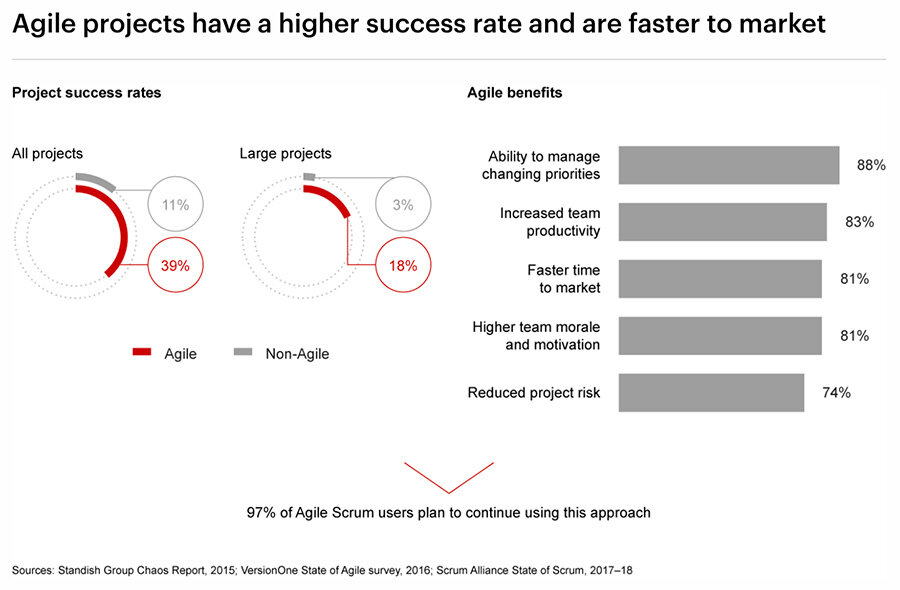Bain Asserts Agile to Accelerate Operational Improvements
Many organizations have operations teams skilled in improving efficiency and quality using methodologies such as Lean Six Sigma, Kaizen, and TPS. But it is rare to see Agile teams working in operations or the supply chain.
The Agile methodology has its roots in operations. Organizations such as Toyota, Bell Labs and Lockheed Martin’s Skunk Works were the first to deploy Agile-like concepts, using cross-functional teams, breaking down work into small increments, and utilizing quick sprints of one to four weeks to develop solutions. Agile techniques achieve breakthrough results through:
Scale: Research shows large projects under Agile management are six times more likely to succeed than non-Agile projects.
Speed: Organizations that have used Agile teams say they are more productive and faster to market.
Risk: The Agile approach reduces project risk, better manages changing priorities, and increases team motivation
The challenge with operations transformations is their complexity. Leaders have their hands full with strategy and productivity goals. Agile teams develop and implement solutions faster because they are self-managing and have the decision-making authority to achieve bold goals. Ultimately, Agile teams free senior leaders from the details of the change efforts so they can spend time on the strategic issues.
Source: Bain & Company
Kure empowers Agile teams to rapidly achieve bold goals. Start your Agile transformation today!

